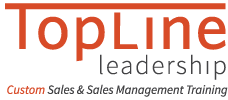Albert Einstein had a sign on his office wall: “Not everything that counts can be counted, and not everything that can be counted counts.”
Albert should have been in Sales Operations, because his sign explains why so many companies who make huge investments in CRM systems like SalesForce.com and others can be totally frustrated with low sales rep adoption rates and inaccurate forecasting results: Not everything that can be counted counts.
Why do so many salespeople resist the usage of CRM systems? One reason is that because of flawed CRM funnel structure, sales managers are unable to coach salespeople effectively. While managers can monitor activity levels after-the-fact, flawed funnel structure inhibits managers’ ability to coach sales skills, strategy, knowledge, etc. So your reps don’t sell more when they put information into CRM, and they wonder, “Why am I doing all this extra work? What’s in it for me?”While managers can monitor activity levels after-the-fact, flawed funnel structure inhibits managers’ ability to coach sales skills, strategy, knowledge, etc. So your reps don’t sell more when they put information into CRM, and they wonder, “Why am I doing all this extra work? What’s in it for me?”
To explain flawed funnel structure, here is a typical funnel structure built into a CRM tool. The funnel is based on the steps of that company’s sales process:
- New opportunities
- Qualification
- Needs analysis
- Value proposition
- Proposal
- Negotiation/close
Notice that these steps describe what the company expects a sales rep to do, not what it wants customers to be doing. When you track sales this way, an opportunity can appear to be progressing quite nicely because the salesperson is doing everything the funnel describes. But if the customer slows down their buying process, or if your rep makes a mistake, nobody knows until it’s too late; because neither the rep nor the manager is measuring the success of each step by tracking buying behavior.
Let’s assume, for example, that your sales rep has moved swiftly through their sales process and got as far as submitting a proposal. But you have no idea whether the customer understands their needs or if they understand the economic impact if they do nothing. A sales-process-focused CRM doesn’t tell you if the customer is comparing your solution to those of your competitors or has established the priority of their buying criteria.
So when CRM indicates that the rep submitted a proposal, you might think that deal is almost done. But the reality could be very different. And your sales manager has missed a lot of opportunities to coach the rep to get better at helping the customer complete their actions of buying.
As Albert told us, not everything that can be counted counts. Where your sales rep is in the sales process doesn’t count. What does count is – what is the customer doing? Where is the buyer is in their buying process?
When you have this kind of sales-process-focused disconnect built into your CRM system, managers have no option but to use data like call frequency as a policing tool. I have not yet met a salesperson who enjoys getting interrogated.
How then can a company create a situation where sales reps are more motivated to use the CRM system? The key is to re-align your funnel – and your company’s sales process – on the buying process. This will help you in three ways:
1. Improve forecast accuracy by forecasting based on customer-go-forward actions
When the sales funnel is aligned with the customer’s buying process, each stage of the funnel identifies specific actions that customers take when they are moving forward in their buying steps. Tracking that a customer has, say, allocated funds for a buying decision or has acknowledged to your rep the importance of your company’s differentiators is a lot more meaningful in terms of evaluating the status of a deal than knowing that your rep has completed needs analysis.
2. Sales increase because your reps are keeping more prospects moving forward
Part of defining your customers’ buying process is being able to identify when they have completed one step and are moving on to the next step – that is, identifying “exit criteria” for each buying step. Salespeople can then consider the criteria in CRM to help them answer the all-important question for sales call planning: “What specific action do I want my prospect to take at the end of this meeting?”
Do you agree with me on the following point? – Most salespeople sell too fast, especially during the early stages of an opportunity. Concentrating your reps’ attention on achieving the exit criteria will help reps slow down each meeting and help your customers to complete their buying process more quickly (for more information on this topic, read my 2011 book “Slow Down, Sell Faster!”) http://www.amazon.com/Slow-Down-Sell-Faster-Understand/dp/0814416853/ref=sr_1_2?s=books&ie=UTF8&qid=1398015807&sr=1-2&keywords=slow+down
3. Improves sales managers’ visibility in the funnel so reps receive better coaching
When you’re tracking deals in CRM based on customer progress (not just sales rep activities), you will notice sooner if a deal slows down or falters. That means you as a manager have a chance to get involved sooner and coach the rep how to get the deal back on track. Voila! – The rep has now benefitted from your CRM, and will see much greater value in keeping their records up to date.
In short, when you have clearly defined exit criteria for the buyer in each stage, you’ll get far more impact with both your CRM and sales coaching. Sales forecasts become more accurate because you’ll know more about where your customers are in their buying process; a rep’s overly-optimistic and subjective opinion is replaced by far more objective evidence of buyer behavior. And coaching discussions with reps will be more effective because you’ll be focused on developing reps’ skills in moving customers through their buying process.
To get higher CRM adoption do what Albert Einstein would do – start counting what counts”¦.. buyer behavior.
If you are interested in our Buying Process Funnel model please contact me [email protected]

